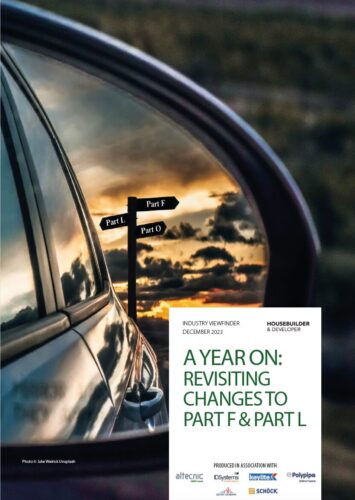
The Future Homes Standard, due to be introduced in 2025, will require all new homes to produce 75-80% fewer emissions than current levels. In 2022 an interim ‘stepping-stone’ to the standard was introduced, which took the form of a tightening of Parts L and F of the Building Regulations, and the introduction of Part O, to prevent consequent overheating.
As part of the Government’s drive towards its legal commitment to achieving net zero by 2050, under the new Part L new homes in England must produce 31% fewer carbon emissions. At the same time, Part F has also been strengthened to ensure that these homes are well ventilated, and Part O has been introduced to ensure that more air-tight homes don’t overheat.
In October 2022, Housebuilder & Developer surveyed readers to discover their views on these important changes to the Building Regulations, and a year later we again asked housebuilders to tell us how things had progressed in terms of awareness of their impact, current approaches to compliance, and barriers to meeting the new demands.
By revisiting the issue and asking some identical questions as the 2022 survey, we provide a useful comparison as well as further insights on housebuilders’ successes or otherwise with Parts L & F Part O, and the problems they need answers to.

